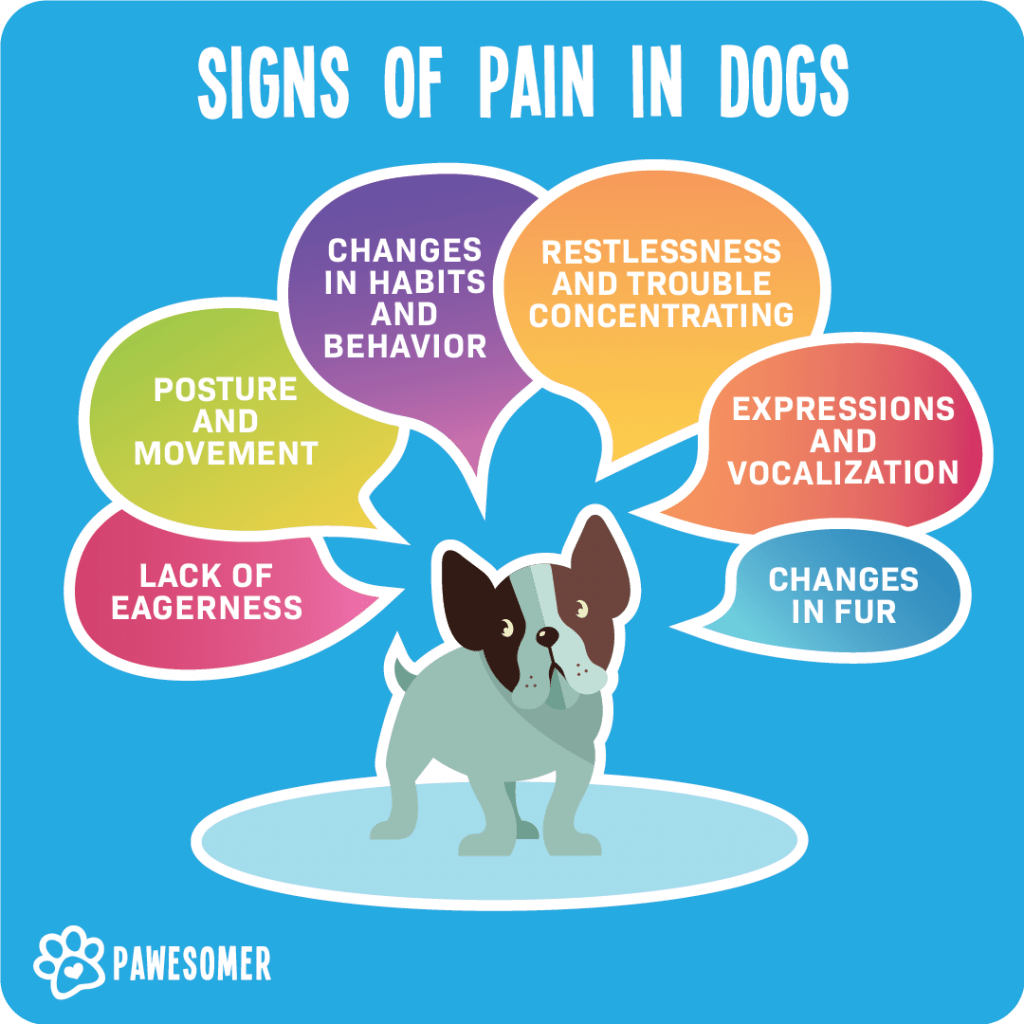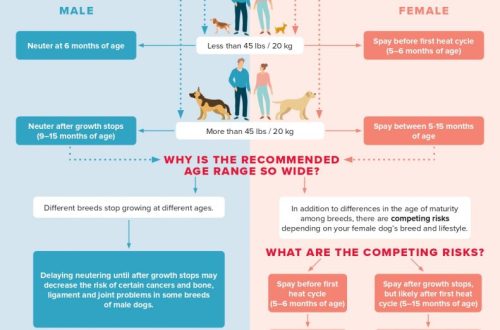
Pain in dogs
A dog, cat or other animal, unfortunately, cannot tell us when something hurts, but it is extremely important to know about this in order to help the pet in time and effectively. How to understand that the dog is in pain, and how to help it?

Photo: pixabay.com
Contents
What is pain and why is it important to relieve the animal’s pain?
Pain is an unpleasant sensory or emotional experience associated with existing or potential injury.
The pain is acute and chronic.
If the pain is acute, it is almost always possible to eliminate its cause and thus save the dog from pain. Acute pain must be stopped in the first 12 – 24 hours.
If the pain is chronic, it is about maintaining an acceptable quality of life for the dog, because chronic pain reduces the quality of life. Various methods of treatment are used here, both drug and non-drug.
Why is it important to relieve dogs of pain? The fact is that, in addition to the negative impact of the disease on the body of the dog, the pain aggravates the condition of the animal.
Due to severe pain, the dog cannot breathe normally (breathing becomes frequent and shallow), the resulting tachycardia can adversely affect the functioning of the heart muscle, weakened immunity (due to the accumulation of hormones in the body that negatively affect it) makes the body vulnerable to infections, increasing blood viscosity increases the risk of blood clots, reduced peristalsis causes nausea and vomiting, etc. All this can lead to serious complications.
Of course, first of all, this all concerns very strong or prolonged and debilitating pain.
That is, pain is not just some “inconvenience”. Pain is the cause of major physiological changes that will cause the dog to recover much more slowly (if at all). And proper anesthesia at the acute stage prevents the development of a syndrome called “chronic pain”.
How do you know if a dog is in pain?
There are symptoms that will help you understand that a dog is in pain:
- Rapid breathing.
- Cardiopalmus.
- Anxiety.
- The dog cannot sleep or wakes up constantly.
- The dog does not eat well or refuses to eat.
- Difficulty changing positions (for example, difficulty getting up or lying down).
- Lameness, unwillingness to move.
- Lethargy.
- Apathy.
- The dog adopts a strange posture (for example, hunched over).
- Changes in the dog’s behavior, even minor ones (eg, irritability or sadness).
All of this is cause for concern. And if you notice one or more of these signs in your dog, see your veterinarian as soon as possible!

Photo: pixabay.com
Myths about pain in dogs
Unfortunately, myths about whether and how dogs experience pain are popular among a large part of dog lovers. These myths have long been refuted by science, but, like all non-scientific beliefs, they are extremely tenacious. What are these myths?
- This breed (pit bull, rottweiler, … – substitute the right one) has a low pain threshold. Painful breed as such does not exist in principle. There is an antinociception system. Antinociception is the mechanisms of the body that allow itself to anesthetize itself, and without these mechanisms, any pain would cause a serious condition. This system is really developed differently in different representatives within the same species and differs even during the life of one individual. For example, in two people it can be developed differently, and in children, on average, it is better than in older people. And there are dogs that for a short period of time, when there is some serious stress factor, will not experience severe pain. But after this stress factor ends (for example, after a fight), the dog will have a pronounced pain syndrome, and pain relief is just as necessary for them as for everyone else.
- Dogs don’t get sick. However, dogs have even more nerve endings in some areas of the body than humans. Accordingly, with injuries to these areas (for example, the muzzle), the dog experiences more severe pain than, for example, a person with facial injuries.
- The dog will be patient, it’s just a dog. People who hold this view would be better off not approaching animals at all.
- The leg will heal better if the dog does not step on it. – which means that painkillers are not needed for the dog to take care of the leg itself. This is often said after fractures. But, for example, veterinarian Tatyana Krasnova, speaking at the Pet’s Behavior-2018 conference, cited the results of studies that say that after surgery (osteosynthesis), functions should be fully preserved immediately after surgery (albeit with the use of painkillers). That is, the dog can fully move. And if the veterinarian says that the dog should not step on the foot, did he correctly operate on it? After all, in the case when the dog does not step on the leg, it develops a contracture and will need a number of physiotherapy procedures to develop the leg later.
How to relieve dog pain at home?
Unfortunately, at home, it is extremely difficult to relieve the dog’s pain (and not harm it at the same time). However, to some extent, it is possible to alleviate the condition of the pet.
- Apply ice to the injured area or massage with ice cubes. It is better to use not tap water, but frozen chlorhexidine.
- Consult with the veterinarian by phone, whether it is possible to use painkillers and which one.
And be sure take your pet to the vet immediatelyto be examined by a specialist!

Photo: macdill.af.mil
There are diseases that cannot be cured (and relieve the dog’s pain) at home on their own.
How can an owner harm a dog?
If you treat the dog yourself, you can, unwittingly, greatly harm the pet. The main mistakes owners make when trying to relieve the dog’s pain on their own:
- Giving “human” medicines. Many medicines that help people are deadly for dogs!
- Give medications that the veterinarian prescribed in earlier stages of the disease or for other diseases, when new symptoms appear.
- Do not seek veterinary help when your dog is in pain.
Watch your dogs closely. If something in their behavior or appearance alerted you, it is better to play it safe and contact your veterinarian.
And may your pets be healthy!





